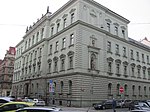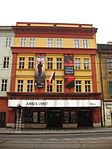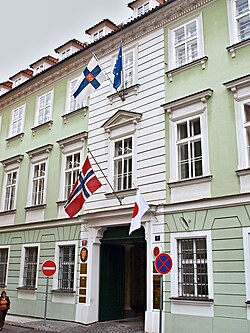Memorial to the Victims of Communism
2002 establishments in the Czech Republic2002 sculpturesBronze sculptures in the Czech RepublicMalá StranaMemorials to victims of communism ... and 5 more
Monuments and memorials in PragueOutdoor sculptures in PragueStatues in PragueTourist attractions in PragueVandalized works of art

The Memorial to the victims of Communism (Czech: Pomník obětem komunismu) is a series of statues in Prague commemorating the victims of the communist era between 1948 and 1989. It is located at the base of Petřín hill, Újezd street in the Malá Strana or the Lesser Town area. It was unveiled on the 22 May 2002, twelve years after the fall of communism in the Eastern Bloc, and is the work of Czech sculptor Olbram Zoubek and architects Jan Kerel and Zdeněk Holzel. It was supported by the local council and Confederation of Political Prisoners (KPV).
Excerpt from the Wikipedia article Memorial to the Victims of Communism (License: CC BY-SA 3.0, Authors, Images).Memorial to the Victims of Communism
alej Obětí totality, Prague Lesser Town
Geographical coordinates (GPS) Address Nearby Places Show on map
Geographical coordinates (GPS)
| Latitude | Longitude |
|---|---|
| N 50.081111111111 ° | E 14.404166666667 ° |
Address
alej Obětí totality
118 00 Prague, Lesser Town
Prague, Czechia
Open on Google Maps










